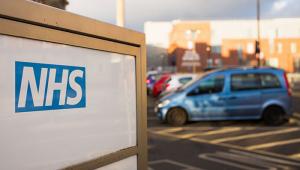For NHS hospitals, mental health, community and ambulance NHS trusts, the funding announced in this week’s Budget was more than had been anticipated, but still less than needed.
The NHS still requires a long term funding settlement that will allow trusts to properly invest in their buildings, equipment and infrastructure.
Questions therefore remain over what can be expected of the NHS over the next couple of years.
The government has increased the day to day spending for the Department of Health by £2.8bn over the next three years.
To be clear, the extra money here is certainly welcomed.
Unlike in previous years, this is a real increase in the Department’s entire budget not just NHS England’s.
But it falls short of the amount many independent commentators had been calling for.
The largest block of money for the NHS announced in the Budget was for capital expenditure.
That is, spending on long term investments such as buildings, equipment, IT and other forms of infrastructure.
At a headline level the chancellor claimed a £10bn package had been announced to boost the NHS’s capital budget; the same figure used in the Conservative Party manifesto as well as Sir Robert Naylor in his review of NHS estates.
However, this figure can be unpicked.
Only around £3.5bn of the £10bn will be directly funded by the Treasury over the next five years, and is in addition to the £425m announced in the March 2017 Budget.
The government believes this can be matched with £3.3bn from NHS land sales.
This is potentially an optimistic assertion given that the Naylor review estimated lands sales in the region between £2.7bn and £5.7bn.
What’s more, questions remain over the distribution of receipts, given that money will be disproportionately raised by London trusts.
The remaining chunk of this £10bn – around £3bn – will need to be raised via private finance initiatives, although we are yet to see detail on how this will work in practice.
This settlement has to be put in context of substantial underinvestment in capital across the NHS, which has raised capital up trusts‘ worry lists.
In 2016/17, for example, capital spending in the health service fell for the third year in a row.
The Health Foundation estimates this means NHS capital spending has fallen by more than a substantial 20% in real terms over the last three years.
The reasons for this are complex, but in part it is driven by trusts being forced to divert planned capital spending to prop up day-to-day spending instead.
In crude terms this might mean that projects are postponed so that trusts can afford day to day spending, such as staff wages and paying suppliers for services.
This has created two major demands.
Firstly, the NHS needs capital for transformative schemes that will improve services and deliver world class care for patients.
This might include implementing an innovative IT infrastructure or delivering wholesale clinical reconfiguration.
Transformational capital spending makes good economic sense.
It’s estimated, for example, that implementing electronic patient records will cost around £1.3bn for the NHS, but could save £6.3bn over the next 10 years. Investing now will reap savings for the future.
Of the £3.5bn capital money announced in the Budget, the government has allocated £2.6bn for sustainability and transformation partnerships to deliver transformational programmes.
It’s clear the government now views STPs as the mechanisms that will administer capital expenditure.
Alongside the Budget the government confirmed those 12 STPs that will receive the first tranche of transformational funding.
But trusts also need capital funding to replace equipment and carry out vital maintenance. As more and more refurbishment projects are delayed, trusts can be forced to rely on equipment that is well past its use by date. This is known as backlog maintenance.
In the last financial year it was estimated the cost to eradicate the total backlog maintenance in the NHS provider sector was £5.55bn.
The budget allocated £700m to tackle “the most urgent and critical maintenance” whilst another £200m will support efficiency programmes to help reduce NHS spending on bills and other back office costs.
It’s fair to say, therefore, that it’s difficult to see how the settlement meets the NHS’s backlog requirements.
The risks associated with this backlog are considerable.
Assessments are carried out within trusts to determine the safety of existing infrastructure and equipment.
These assessments are primarily based on the physical condition and mandatory fire safety requirements of apparatus.
Assets that fall into the highest risk category are thought to be “operationally unsound and in imminent danger of breakdown”.
Last year it was estimated that each trust faced an average £4m cost to eradicate these high risk backlog maintenance risks alone.
The money announced by the chancellor is a welcome recognition that NHS capital has been underfunded in recent years.
However, in practice providers will continue to find it difficult to access the money they need to both meet the day to day investment requirements as well as to fund transformation.
Overall the Budget was better than expected for the NHS.
Other departments in Whitehall will continue to look on at health enviously.
But with needs and demand growing, the question remains as to how far this money will take us.




















